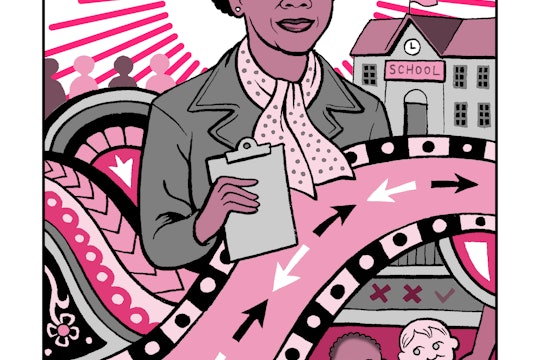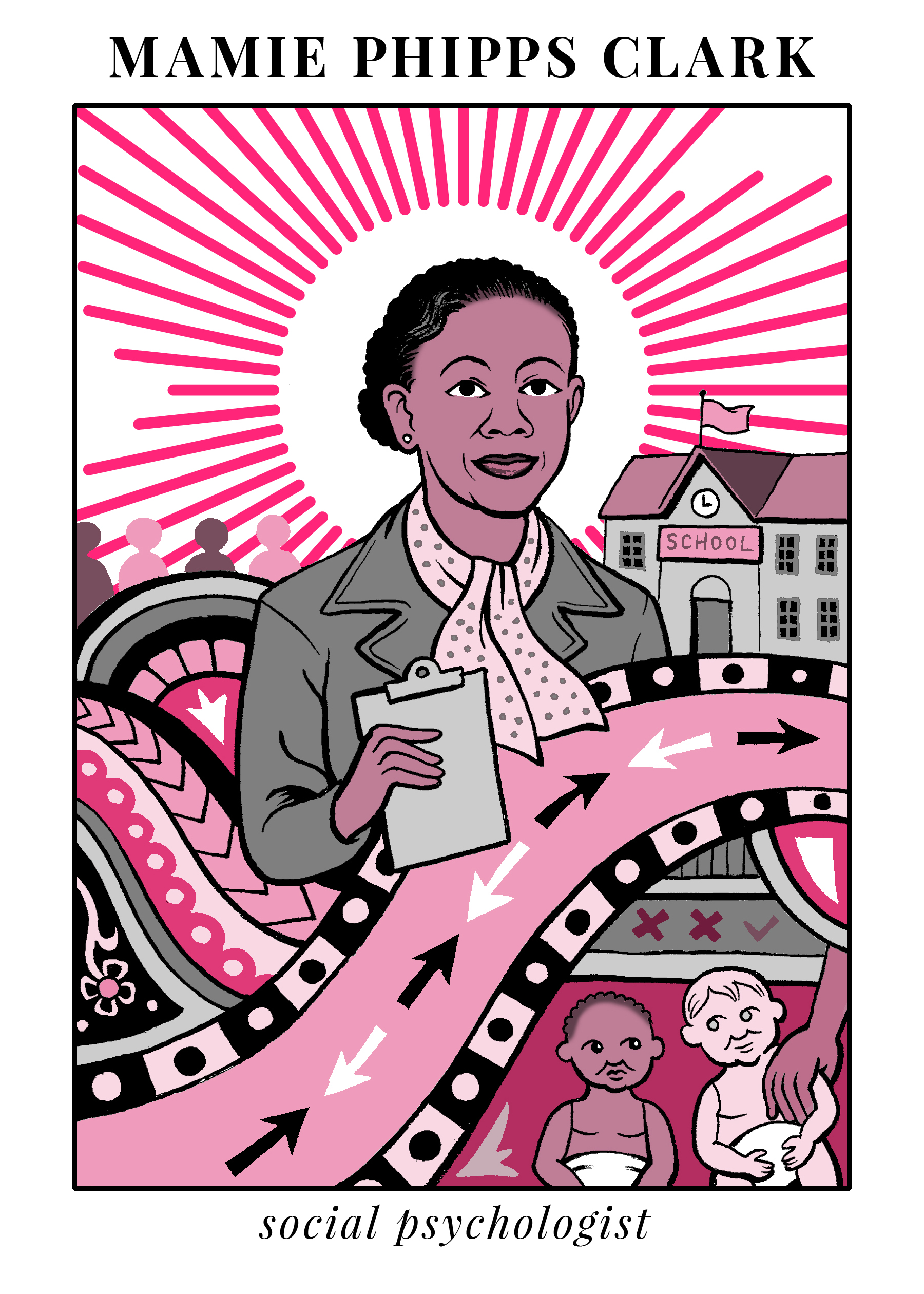
Matteo Farinella
Meet Mamie Phipps Clark, the social psychologist who helped outlaw segregated schools
She became the first black woman to earn a PhD in psychology from Columbia University
Until social psychologist Mamie Phipps Clark (1917-1983) arrived at Columbia University to begin her doctorate, her education had been completely segregated. Her research on racial identification and preference in black children would help make ‘separate but equal’ education a thing of the past.
Clark was born in Hot Springs, AK, to a physician father and homemaker mother. Her early life was one of contrasts: her father was well respected, and the family lived a comparatively comfortable life – but they were still a black family in the Jim Crow south. In a 1976 interview, Clark recalled experiencing a lynching in her town when she was only six years old, and described feeling the effects of educational segregation as a child.
Clark graduated from her segregated high school at 17. She was a bright student that loved school, particularly math. She was offered scholarships to attend two historically black universities - Fisk University in Tennessee and Howard University in Washington DC, where she originally intended to major in math.
It was at Howard that Mamie Phipps would meet her future husband, Kenneth Clark, in 1934 (they married four years later). By her third year of studies, Clark had become discouraged with her math major after finding the professors unsupportive of their female students. Kenneth Clark persuaded her to join him in the psychology department, where she would be able to explore her interest in working with children.

Matteo Farinella
Clark graduated magna cum laude in 1938 and started a summer job working in the office of civil rights lawyer Charles Houston. There, she would meet Thurgood Marshall and other prominent civil rights lawyers and develop a sense of the mounting fight against segregation.
That fall, Clark returned to Howard for her masters degree in psychology. In her thesis, “First Interests in Children and Development of Consciousness of Self,” Clark found that children in segregated public schools in Washington D.C. became aware of their blackness very early in life. This finding set the stage for her later research into racial preference in black children, and how segregation affected children's self esteem and development.
After she graduated with her masters degree in 1939, the Clarks moved to New York City, where they were awarded a Rosenwald Fellowship to support their continued studies. They enrolled in the psychology doctorate program at Columbia University, where Clark challenged herself by studying under Henry E. Garrett, a prominent statistician - and an unabashed racist and eugenicist. Despite his discouragement, she not only completed her thesis work, on how intelligence changes across age in children, but also continued work on the Rosenwald-funded research project that extended the studies from her master’s degree. She and her husband became the first black recipients of psychology doctorates at Columbia University in 1943.
Their most famous work, the Dolls Test, assessed the racial preferences of three to seven-year-old children in segregated schools using four identical dolls that differed only in hair and skin color. During the experiment, the children were asked to present the researchers with the doll that best fit the criteria the researcher asked for. The Clarks found that black children preferred to play with white dolls, and were more likely to describe the white dolls as the ‘nice doll’ and the black doll as the ‘bad’ doll. To help children achieve healthy racial self-identification, Clark increasingly thought that integration was the way forward.
She put that thought into practice when she and Kenneth Clark testified at the Brown v. Board of Education trial, first in Richmond and then in front of the Supreme Court, in 1954. Their Dolls Study was submitted as evidence in support of the Brown case, indicating that segregation, and the associated prejudice, produced pronounced negative effects in black children. In addition, Clark was called upon to refute the testimony of her own PhD thesis supervisor, Henry Garrett. During the trial, he testified that black children were inherently inferior to white children. Clark confronted him under oath to diminish the impact of his testimony. In the end, schools were instructed to integrate 'with all deliberate speed.'
After graduating with their doctorates, the Clarks remained in New York. Kenneth Clark was appointed as a professor at the City University of New York, but Mamie Clark had a more difficult time finding a position. She described being a black woman with a psychology PhD as an ‘unwanted anomaly’ in 1940s New York City.
Finally, Clark found a job that fit her passion - working with homeless and fostered black children at the Riverdale Children’s Association. The experience led her, along with her husband, to open the Northside Center for Child Development in Harlem, one of the first agencies to focus on providing psychological services for black children. The Northside Center was opened in 1946 with money borrowed from Clark’s father – just enough for rent and one part-time clerical worker. In addition to the Clarks, at the beginning there was only one other psychologist, three psychiatrists, and three social workers – all on a volunteer basis. Over time, the Northside Center grew to provide holistic services – therapy, social work, even a school. Clark directed the center until her retirement in 1979.
While Clark’s research helped pass the legislation that ordered the desegregation of American schools, we still haven’t achieved complete equality. As of late, concerns that America is essentially entering a period of “resegregation” have arisen, making it as important as ever to highlight Clark’s work and continue to strive for equality in education and beyond.
